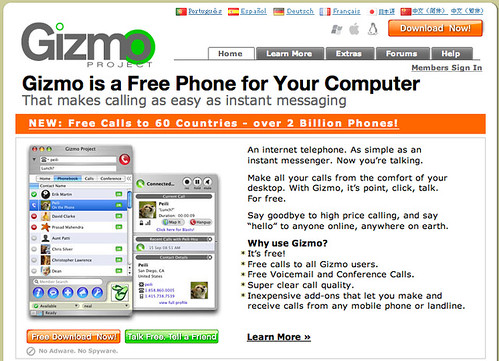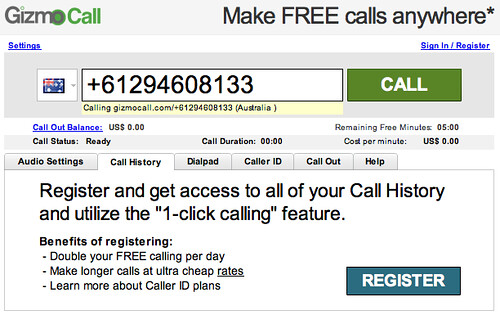 Glocalisation* is a fun contraction of a word: producing a product or service for a global market but customising it for each of the local markets it reaches. Trying to manage my son's Under 6 soccer team using teamcowboy.com once again reminds me how many Web 2.0 companies do a lousy job of glocalisation, and how they miss out on so many benefits as a result.
Glocalisation* is a fun contraction of a word: producing a product or service for a global market but customising it for each of the local markets it reaches. Trying to manage my son's Under 6 soccer team using teamcowboy.com once again reminds me how many Web 2.0 companies do a lousy job of glocalisation, and how they miss out on so many benefits as a result.
In manufacturing industries, it's relatively tough to glocalise your product - it costs time and money to move a steering wheel from the left to the right hand side of a car for right-hand drive markets like Australia (one of many reasons why I'll never own a Bugatti Veyron!). For Web 2.o companies, glocalising is usually as simple as pushing a few bits around.
Web 2.0 companies must rely on doing glocalisation well because revenues-per-customer are slim and must be drawn from a broader base of customers. Companies posing for buyout are valued partly on installed base and user growth rates. More fundamentally, Web 2.0 businesses grow through network effects, and in a crowded marketplace with many competitors in every tiny vertical, it's the best-glocalised service that will grow fastest and reach more markets.
When I signed up for Teamcowboy last night, from the first signup page it was apparent that nobody in the business was thinking much about the world outside of the US.
The signup page makes a common mistake - it requires you to choose a 'region' for your team and includes a list of US states and Canada's provinces only. You can't progress beyond this page, so my son's Australian under six soccer team is now pretending to be located in Guam, since that's the US protectorate closest to the same timezone as Sydney, Australia.
When it's easier to register a team in the Federated States of Micronesia (sporting population: tiny) than Australia (sporting population: just about all 20 million of us) you know it can't be a deliberate policy, it's just near-sighted web development and business strategy.
For one soccer team, that's not a big deal, though it's likely to dissuade a lot of soccer mums from signing up. They're likely to assume the rest of the site's going to require them to fake other US-only information, and at some stage their investment in time for registration will be wasted.
Where it could become a bigger problem down the track is when TeamCowboy begins to monetise its online sports community, with advertisers unhappy about having geo-targeted ads served to audiences in the wrong country, and sports ecommerce merchants left to deal with customers who've ordered goods that can't be delivered. This kind of mistake can be difficult to undo - once you've forced someone to pretend they're in Guam, it can be hard to convince them it's worth correcting the information later.
Other common mistakes in unglocalised user registration pages include forcing users to choose a 9 digit US zipcode, US city or state. Unless there's a very good reason to restrict your userbase to domestic US territory (if, say, your content licensing has geographic restrictions) you're just encouraging your users to lie to you in their very first interaction with your business. Nearly as bad: you're actively corrupting your crown jewels - the data you can use later to monetize your audience, attract investors and find new users.
This is all the easy end of glocalisation. Things get progressively more challenging - but pay increasing dividends - when you start to consider offering versions of your website and your customer service in languages other than English, when you ensure that your terms of service, customer data and privacy policies are adapted to local legal requirements, and when you attempt to cater to fine-grained details such as different names for the same sport in different countries.
Some Web 2.0 services, such as tagging and media storage, require relatively less glocalisation to get adoption in overseas markets. Others, such as merchant review content and ecommerce, require intensive glocalisation. Glocalise well and you may find your biggest market is not in the US, and it may not even speak English. Social network Orkut started as a small in-crowd network for Google employees and their friends, but was dramatically 'hi-jacked' but a large, communicative and active worldwide community of Portuguese-speaking Brazilians. I was an early Orkut user, and it was not unlike being in a bar with a couple of friends having a quiet drink and suddenly being enveloped by a large crowd of friendly, outgoing, gregarious Brazilians - loads of fun!
Knowing Google's ability to glocalise (it offers international versions of many of its products already and is gradually opening international offices not just to sell ads but to develop locally-relevant products) Orkut will one day be a big earner for the company.
What does all this mean to TeamCowboy? FIFA estimates nearly 250 million people play soccer regularly, in about 200 countries worldwide. TeamCowboy's only doing a good job of reaching two of those countries right now, and simultaneously making a mess of its own customer intelligence and market valuation.
*In the US, it's "glocalization" with a "z" instead of an "s" - providing local English spellings are a simple but important element of a truly glocalised business.
Update: I got an email from Travis at TeamCowboy this morning, not because of this blog post, but because he'd noticed that the team I'd registered overnight appeared to be based in Australia, not in Guam. He wanted to let me know that he'd added the ability to register a team in countries outside the US now.
The greatest strength of an internet startup is its ability to re-engineer overnight, and here it is in action. And his closing question gives me great hope for the future of Travis and TeamCowboy - "If there are any other changes to the site that you feel would help your user experience, please let me know. And of course, if you have any questions about anything at any time, just let me know." I'll definitely do that! Web 2.0 startups are able to engage in dialogue with their early customers. Those who choose to, and those who respond, will succeed.











